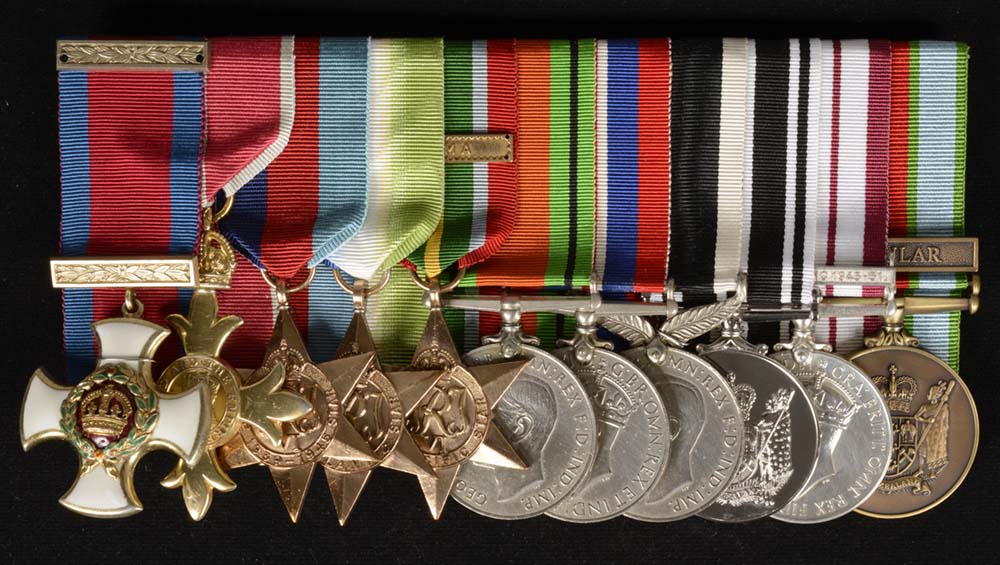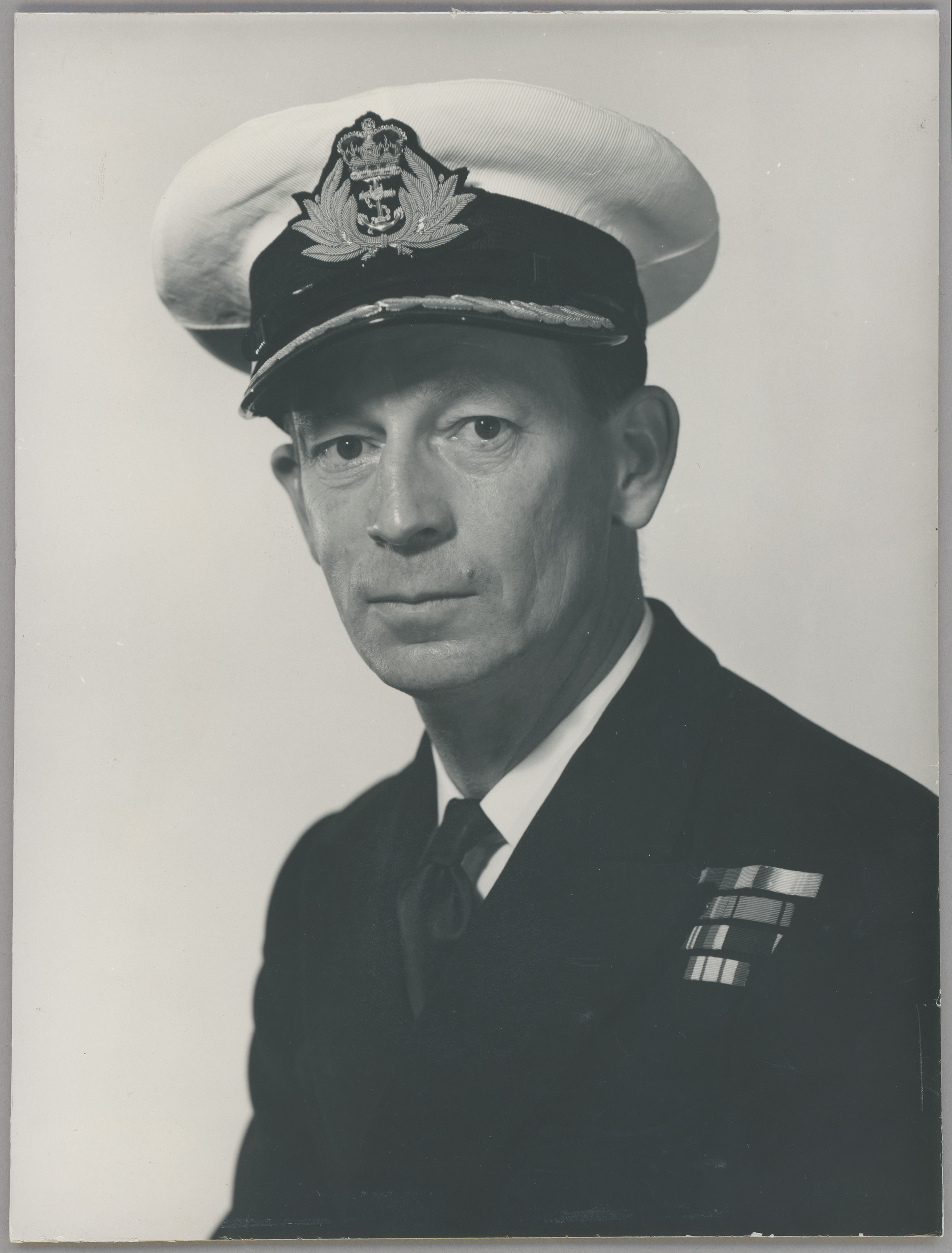

Display No. 10B
SMITH, William James Lanyon
William ‘Kiwi’ Smith enlisted in the New Zealand Army in 1940 and became a gunnery officer in the 19th Field Regiment. However, Smith elected to sign up for the Royal Navy in May 1943. After a short stint in HMNZS Tamaki, he travelled to England on board the SS Ruahine to continue his training in HMS Ganges, after which he joined the ship’s company of HMS Duke Of York. Smith then joined Special Services and was posted to HMS Dolphin where he underwent rigorous testing to assess his suitability as a submariner.
Smith was drafted to HMS Varbel to train on midget submarines, eventually becoming Commanding Officer of one of the training craft, before being made First Lieutenant of the operational submarine XE6, for which the HMS Bonaventure served as depot ship. XE6 and Bonaventure were sent south to the eastern coast of Australia. With the tragic loss of two senior officers in separate diving accidents the submarine flotilla had a complete reshuffle of crew which resulted in Smith becoming first lieutenant on XE3. On 31 July 1945, XE3 carried out a successful attack as part of Operation Struggle on the Japanese cruiser Takao berthed at the naval base in Singapore, an action for which he received the Distinguished Service Order (DSO). He returned to New Zealand in September 1945 and was posted to the shore establishment HMNZS Tasman in October. Smith was then posted to the minesweeper HMNZS Sanda followed by HMNZS Kiwi.
At the end of the Second World War, Smith was one of twelve selected to train as senior officers for the Royal New Zealand Navy (RNZN). He served on a variety of ships before being sent on a sub lieutenants course in the United Kingdom. On completion of the course he joined the commissioning party of the Loch-class frigate HMNZS Hawea as gunnery officer and volunteered for the Hydrographic branch. Upon selection for the branch, Smith was put in charge of recruiting the ship’s company for the survey ship HMNZS Lachlan which was in reserve in Fremantle.
After a time on loan to the Royal Navy, he returned to New Zealand and became involved in the setting up of Scott Base in Antarctica. Later, he was first lieutenant for the first HMNZS Endeavour which took the trans-Antarctica team down to Scott Base. After another short stint on loan to the Royal Navy, Smith returned once more to New Zealand and resumed command of his old ship Lachlan for a period of three years after which he took over as head of Hydrography until his retirement in November 1972. For his service to the RNZN Smith was appointed an Officer of the British Empire in the 1968 Queen’s Birthday Honours.
Awarded medal(s)
Medal Description [Left to Right]:
Companion of the Distinguished Service Order (DSO)
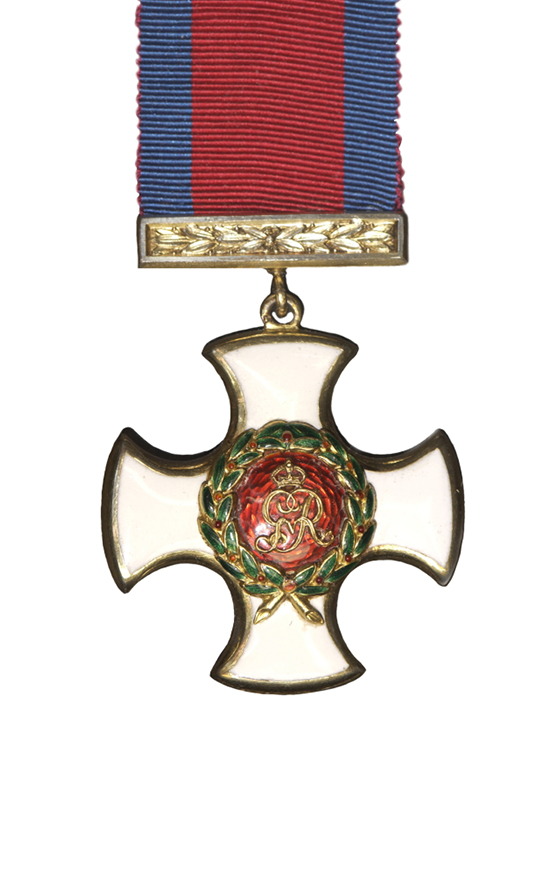
The Companion of the Distinguished Service Order (DSO) was instituted in 1886, to recognise acts of gallantry by military officers for which a Victoria Cross was not considered appropriate. In 1942, the regulations were amended to allow the award to be made to officers of the Merchant Navy for gallantry in the presence of the enemy. Following a UK review of gallantry awards in 1993, the purpose of the DSO was changed to recognise outstanding leadership at all ranks. At that time the Conspicuous Gallantry Cross replaced the award of the DSO for gallantry. The DSO was awarded to over 300 New Zealanders during both World Wars. The DSO is no longer awarded in New Zealand since the introduction of New Zealand’s own system of gallantry and Bravery awards in 1999. Bars are awarded for subsequent acts of gallantry. The ribbon is red with narrow blue edges.
Officer of the Most Excellent Order of the British Empire (OBE)
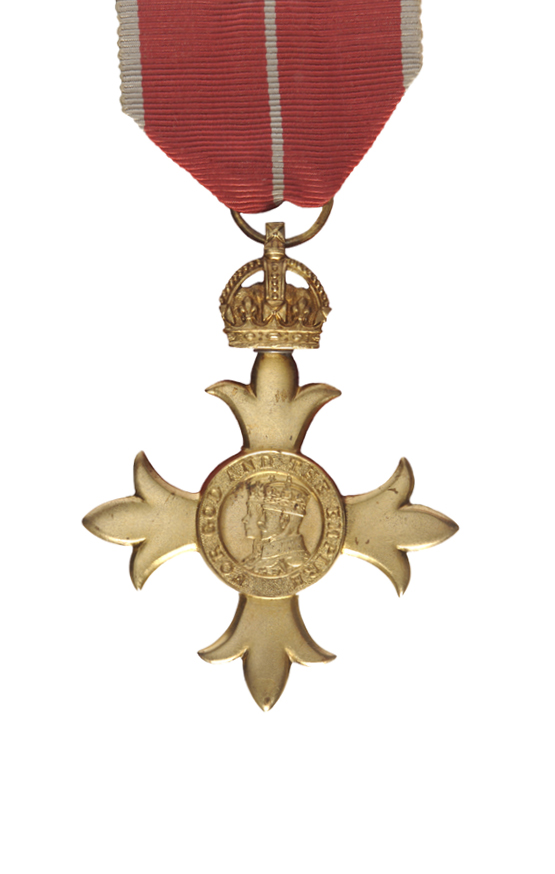
Established by King George V in 1917 for services to the British Empire. The Order has five classes: Knight and Dame Grand Cross (GBE), Knight Commander and Dame Commander (KBE / DBE), Commander (CBE), Officer (OBE) and Member (MBE). The OBE badge is in silver-gilt. In December 1918, the Order was split into two divisions: a Civil Division for civilian recipients; and a Military Division for awards to commissioned officers and warrant officers for distinguished service in action. The insignia of the Civil and Military Divisions is distinguished only by the ribbon, the military award having a narrow central stripe. Prior to the introduction of the New Zealand Order of Merit in 1996, the Order of the British Empire was the most common honour awarded to New Zealand military personnel.
The 1939-1945 Star

The 1939-45 Star is the first in a series of eight campaign stars instituted in 1945 to recognise service in World War Two. The ribbon has three equal vertical stripes of dark blue, red and light blue. The dark blue stripe symbolises the service of the Navy and the Merchant Navy, the red stripe symbolises the service of the Army, and the light blue stripe symbolises the service of the Air Force. The equal width bands represent the equal contributions of the three service arms towards victory. The ribbon was devised by King George VI. Two clasps could be awarded with this medal: ‘Battle of Britain’ and ‘Bomber Command’. Only aircrew would qualify for these clasps although a small number of Fleet Air Arm naval pilots flew for the air force and would be eligible for the ‘Battle of Britain’ clasp.
The Atlantic Star
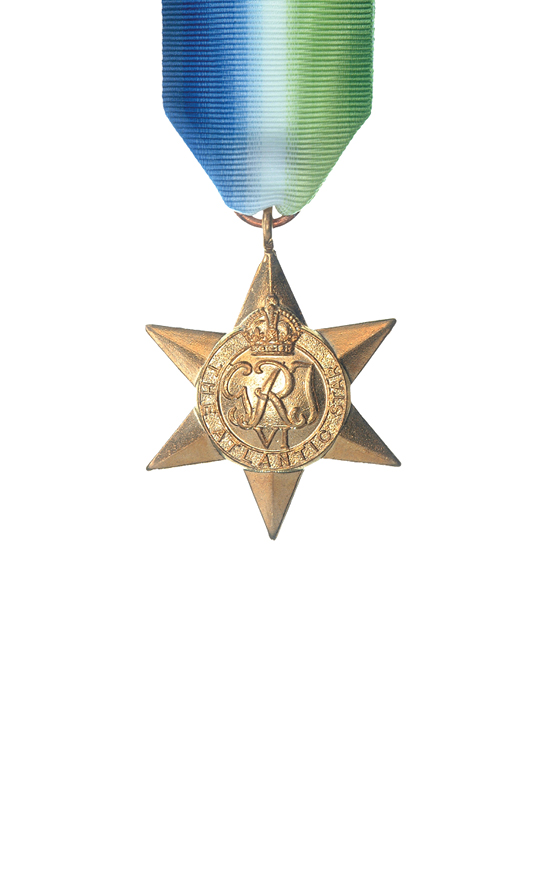
The Atlantic Star was awarded for service during the Second World War. It was instituted to commemorate the Battle of the Atlantic the longest continuous military campaign in the Second World War running from 3 September, 1939 – 8 May, 1945. Six months naval service or four months air service in the Atlantic, United Kingdom (‘home’) waters or North Russian waters was normally required. The ribbon is watered silk coloured blue, white and green, symbolising service in the oceans. Two clasps could be awarded with this medal: ‘France and Germany’ and ‘Air Crew Europe’. Personnel issued the Atlantic Star who then qualified for either the France and Germany and the Air Crew Europe Stars were awarded a clasp in respect of the second only (as only one clasp could be worn on the star).
The Pacific Star
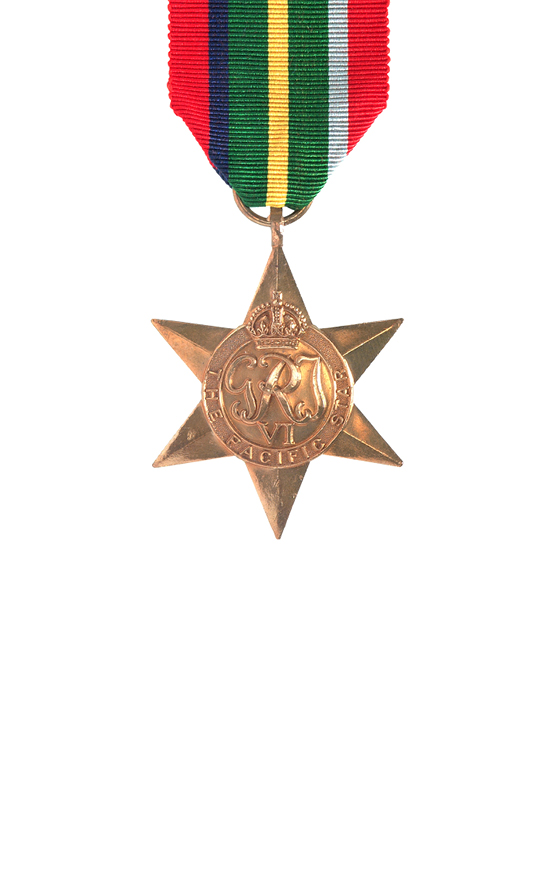
The Pacific Star was awarded in the Second World War for operational service in the Pacific between 8 December 1941 and 2 September 1945. This medal was also awarded for certain specified service in China, Hong Kong, Malaya and Sumatra: between 8 December 1941 and 25 December 1941 (for Hong Kong); between 8 December 1941 and 15 February 1942 (for China and Malaya); and between 8 December 1941 and 23 March 1942 (for Sumatra). The centre of the ribbon is dark green (symbolising the jungle) with a central yellow stripe (symbolising the beaches). On the outer edges are wide stripes of red (representing the Army), with narrow stripes of dark blue and light blue (representing the Navy and Air Force) between the stripes of dark green and red. A ‘Burma’ clasp could be awarded with this medal. Personnel qualifying for both the Pacific and Burma Stars were awarded the first star but only a clasp in respect of the second.
The Defence Medal
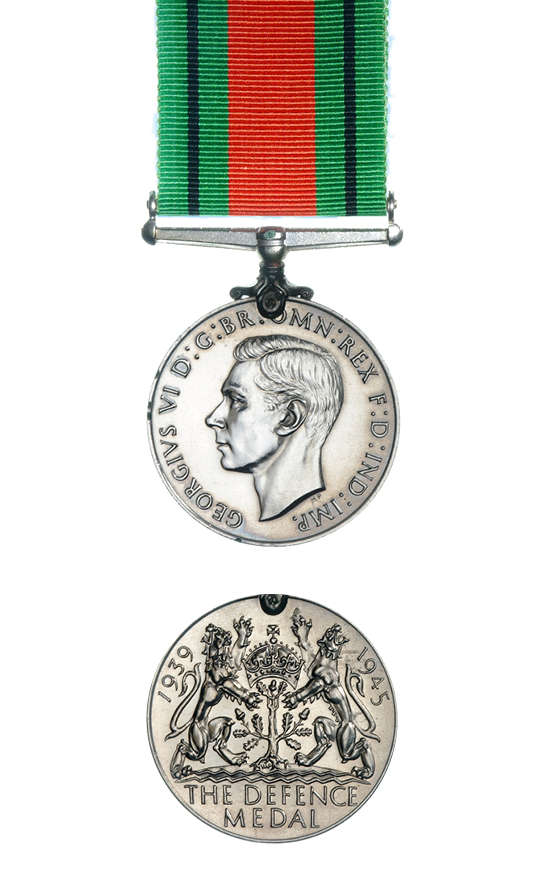
The Defence Medal was awarded to British and Commonwealth forces who served during the Second World War. It was awarded to New Zealand military personnel who served overseas in a non-operational area such as Great Britain, Palestine or Fiji. The ribbon’s flame-coloured orange centre band and green edge bands symbolise enemy attacks on Britain’s green and pleasant land. The narrow black stripes represent the black-outs against enemy air-attacks.
The War Medal 1939-1945

The War Medal 1939-45 was awarded across the British Commonwealth to all full-time members of the Armed Forces in the Second World War for 28 days service between 3 September 1939 and 2 September 1945, irrespective of where they were serving. The ribbon is the red, white, and blue of the (British) Union Flag. There is a narrow central red stripe with a narrow white stripe on either side. There are broad red stripes at either edge, the two intervening stripes being blue.
A bronze oak leaf on the medal ribbon denotes that the recipient was Mentioned in Despatches. To be Mentioned in Despatches a member of the armed forces had their name mentioned in an official report, written by a superior officer, and sent to a higher command. The report would describe the individual’s gallant or meritorious action in the face of the enemy.
The New Zealand War Service Medal
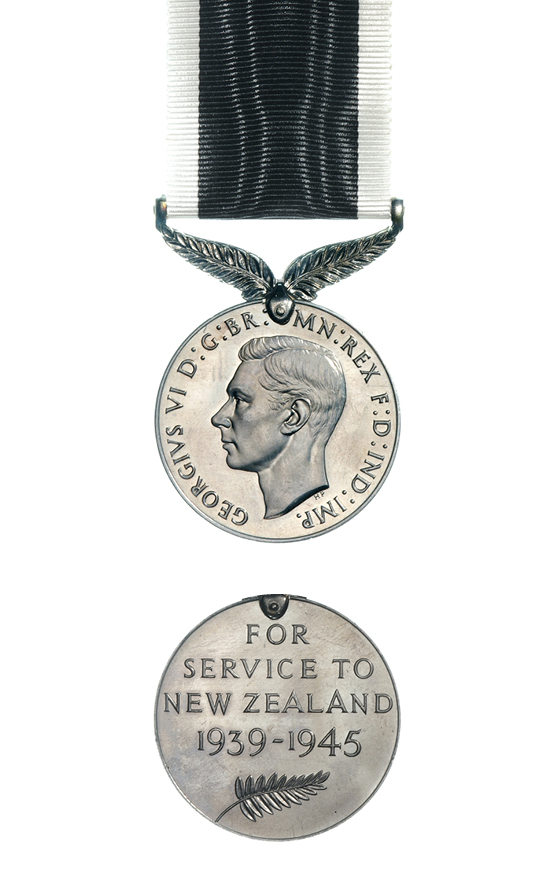
The New Zealand War Service Medal was awarded for 28 days’ full time service or six months’ part time service in the Second World War in any of the New Zealand Armed Forces including the Reserves, Naval Auxiliary Patrol Service, or Home Guard, between 3 September 1939 and 2 September 1945.
The New Zealand Operational Service Medal
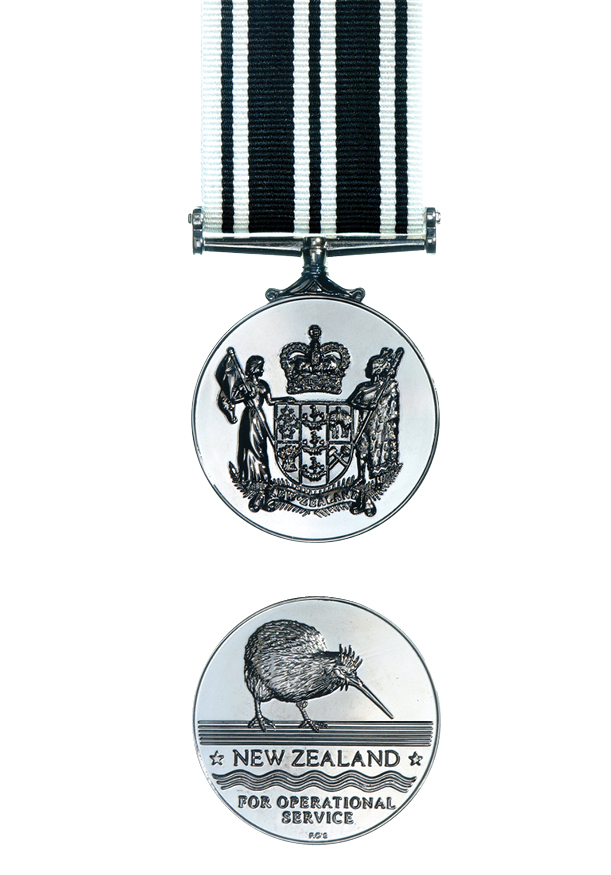
The New Zealand Operational Service Medal (NZOSM) was instituted in 2002 to recognise New Zealanders (military and civilians) who have served since the end of the Second World War. The NZOSM provides recognition for those who have earned a campaign medal or completed 7 days or more of operational service since 3 September 1945. It is awarded once only to an individual, regardless of how many times he or she has deployed on operations. The medal features the New Zealand Coat of Arms on the obverse and a kiwi on the reverse. The ribbon is black and white stripes, representative of New Zealand’s national colours.
The Naval General Service Medal 1915-1962
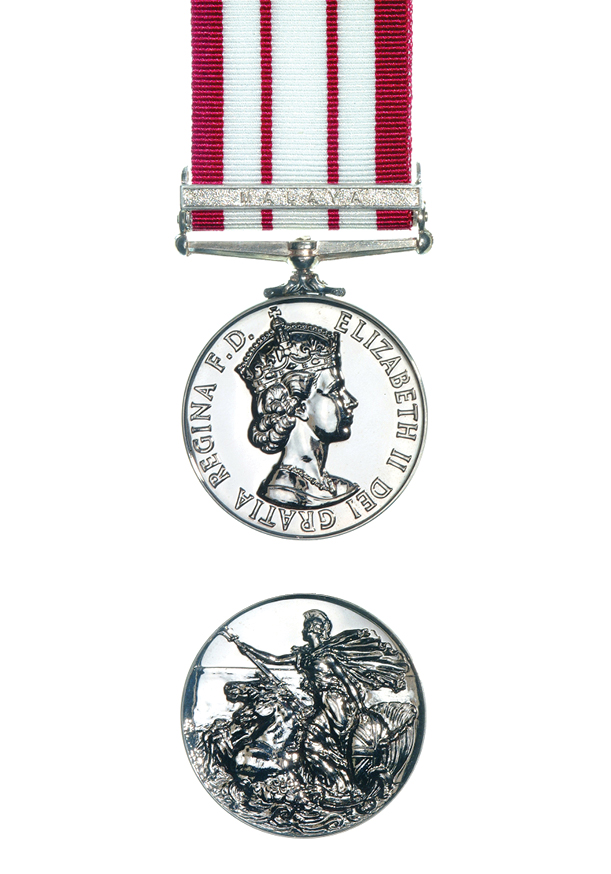
The Naval General Service Medal (NGSM) 1915-1962, was instituted in 1915 to recognise service in minor naval operations for which no separate medal was intended. They were always issued with a clasp for the specific area of operation. A total of seventeen clasps were awarded. Examples in our collection include the ‘Persian Gulf 1909-14’ clasp for operations against gun-runners; the ‘Palestine 1936-39’ and ‘Palestine 1945-48’ clasps which were issued for service in the pre-war Arab uprising and post-war Jewish insurgency; the ‘Minesweeping 1945-51’ clasp which was awarded for six months minesweeping service afloat; the ‘Malaya’ clasp recognising the service of naval personnel, including the Royal New Zealand Navy, during the Malayan Emergency of 1948-1960; and the ‘Yangtze 1949’ clasp for those on HMS Amethyst and other vessels attacked by Communist Chinese forces.
New Zealand Defence Service Medal
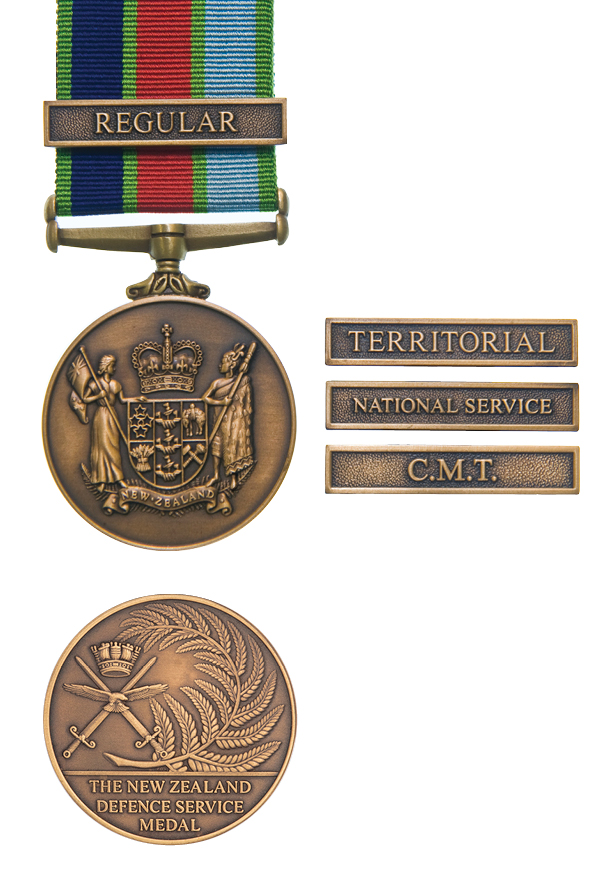
The New Zealand Defence Service Medal (NZDSM) was instituted in April 2011 to recognise military service since the end of the Second World War. One or more of four clasps can be awarded with the medal determined by military service undertaken: Regular, Territorial, C.M.T. (Compulsory Military Training) and National Service.
Eligibility is three years of service in either the Regular or Territorial (Reserve) Forces of the New Zealand Defence Force (Navy, Army, Airforce), or those who undertook Compulsory Military Training (under the Military Training Act 1949) or National Service (under the National Military Service Act 1962).
The medal itself has the New Zealand fern frond and the badge of the New Zealand Defence Force which combines the emblems of the (Navy, Army and Air Force). The ribbon colours also represent the three services: Navy (dark blue), Army (red) and Air Force (light blue).

